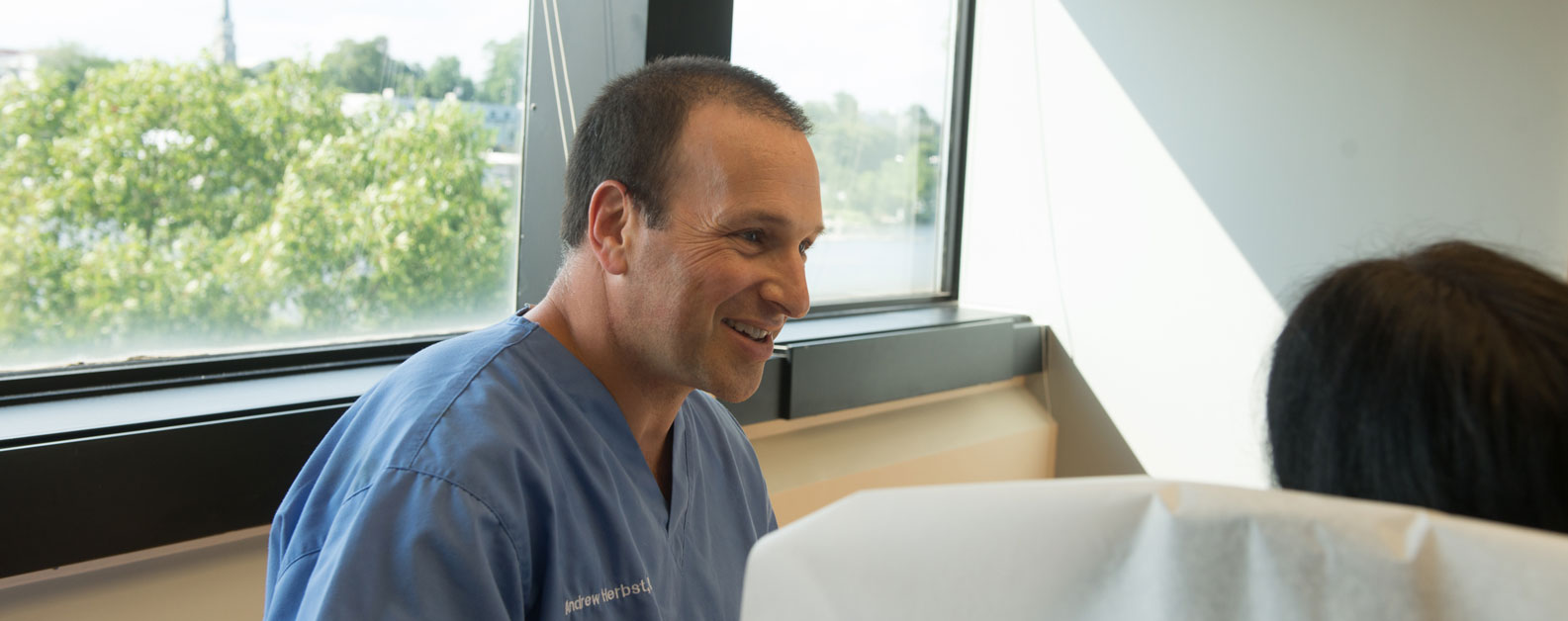Post Operative Instructions
Discomfort after surgery is common. It ranges from in most cases mild soreness to occasionally intense throbbing depending on the extent of the procedure. Two extra, strength Tylenol tablets every 6 hours should help to relieve the pain in most cases. Sometimes Dr. Herbst will prescribe stronger prescription medication. To lessen the discomfort, relieve swelling, and minimize bruising, an ice pack should be applied over the dressing 15 minutes of every hour for the first 24-48 hours. Elevation of the wound is also helpful.
THE PAIN SHOULD IMPROVE EVERY DAY. IF IT DOES NOT OR WORSENS, CALL OFFICE IMMEDIATELY AS THIS IS A SIGN OF INFECTION.
A pressure dressing has been applied to prevent bleeding and minimize swelling. You may notice a small amount of blood on the edges of the dressing which is normal. If bleeding persists apply firm pressure for 30 minutes without letting up. Use a timer to make sure you apply for the entire 30 minutes. If the bleeding persists call the office at (203) 957-3535.
IN CASE OF ANY EMERGENCY CALL (203) 957-3535. IF IT IS AFTER HOURS YOU WILL BE GIVEN INSTRUCTIONS ON HOW TO REACH DR. HERBST.
Changing the Dressing
- Please wash your hands before and after wound care.
- The first dressing change should begin approximately ____ hours or ______ days after the dressing was applied.
- Gently remove the old dressing. If necessary you can soften by soaking with gauze pads saturated with hydrogen peroxide
- Place a STERILE GAUZE PAD soaked with warm water and liquid soap over the site for a few minutes and gently dab the wound trying to remove any dried blood or debris attached to the surgical site.
- Apply a thin layer of AQUAPHOR/VASELINE MUPIROCIN OINTMENT SILVADENE CREAM. We do not recommend using Bacitracin, Neosporin or triple antibiotic ointment because they can cause a rash in many patients.
- Using HYPAFIX TAPE/PAPER TAPE apply a appropriately sized TELFA PAD/NON STICK BANDAGE to the wound. An appropriately sized Band-Aid can also be used as a dressing
- Follow this procedure twice daily until you return for suture removal.
During the Healing Process
- Upon removing the initial dressing, you may shower and allow the wound to get wet.
- If the wound is on your scalp, you may wash your hair with a baby shampoo to avoid any irritation..
- A little bit of redness around the wound is normal. However, THE PAIN FROM THE SURGERY SHOULD BE IMPROVING EVERY DAY. IF THIS IS NOT THE CASE OR THE WOUND IS BECOMING RED, TENDER, OR THERE IS A DISCHARGE, CALL THE OFFICE IMMEDIATELY AS THIS COULD BE A SIGN OF INFECTION.
- If your surgery is on your face, forehead, or scalp, eye swelling and bruising may develop. This can occur up to 3 or 4 days after the procedure. It usually resolves without complications.
- Avoid swimming underwater and any activities that may stretch the sutured wound. Ask Dr. Herbst regarding the safety of any specific activities.

